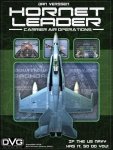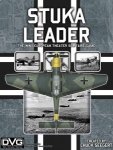-
Załączniki bezpieczeństwa
Załczniki do produktuZałączniki dotyczące bezpieczeństwa produktu zawierają informacje o opakowaniu produktu i mogą dostarczać kluczowych informacji dotyczących bezpieczeństwa konkretnego produktu
-
Informacje o producencie
Informacje o producencieInformacje dotyczące produktu obejmują adres i powiązane dane producenta produktu.GMT Games
-
Osoba odpowiedzialna w UE
Osoba odpowiedzialna w UEPodmiot gospodarczy z siedzibą w UE zapewniający zgodność produktu z wymaganymi przepisami.
Note on 3rd Printing: This version is identical to the 2nd printing, except that any known errata has been corrected.
| TIME SCALE | 1943 to 1945 |
| MAP SCALE | European and Pacific Theaters |
| NUMBER OF PLAYERS | 1-3 |
COMPONENTS
- One 22"x 34" Mounted Mapboard
- One full-color die-cut countersheet
- Three Player Aid Cards
- One 10-sided die
- Rules of Play Manual
- Cards, Blocks, Tokens
- One sticker sheet
- Six 6-sided dice
DESCRIPTION
By late 1942 the Axis had been stopped at Stalingrad, El Alamein, and Guadalcanal. With Axis expansion halted and Allied victory only a matter of time and resources Churchill, Roosevelt, and Stalin began to focus on how to shape the ensuing peace to their advantage. Churchill is a game about the inter-Allied conflicts that occurred over the Conference table as each side vies to control the Allied agenda and the course of things to come.
The players in the game take on the roles of Churchill, Roosevelt, or Stalin as they maneuver against each over the course of six Conferences that determine who will lead the Allied forces, where those forces will be deployed, and how the Axis will be defeated. The player whose forces collectively have greater control over the surrendered Axis powers will win the peace and the game.
Churchill is a three player game of Coop-etiion where the players must cooperate to win World War II, while at the same time achieving a superior post war position over your allies. If the players collectively fail to defeat the Axis the Allies lose, but if the Axis are defeated, there is a victor of the peace that follows. There is also a two player and solo variant.
Churchill is NOT a wargame, but a political conflict of cooperation and competition. While the game focuses on 10 of the historical conferences from 1943 till the end of the war these and much of this design should not be taken literally. Before and after each conference small groups of advisors and senior officials moved between the Allied capitals making the deals that drove the post war peace. Each conference sees one of a group of issues nominated for inclusion in the conference. The issues categories are: Theater leadership changes, directed offensives, production priorities, clandestine operations, political activity, and strategic warfare (A-bomb). Each of the historical conference cards independently puts some number of issues such as directed offensives or production priorities metaphorically put on the table, while the players nominate an additional 7 issues.
The game display for this is a circular conference table that the three players sit around behind their 'seat'. Each player has a staff deck of named personages, such as Secretary Stimson and Anthony Eden that are randomly drawn to make your conference hand. A pre-conference round of cards gives leverage to the winner who then moves an issue toward their side of the table equal to the value of the card played. Play then proceeds with the conference where each player in turn plays a card on one of the issues in the center of the conference table moving it the value of the card toward his side of the table. Each card is an historical personage and they often have bonuses if played on a particular category of issue. Contesting an issue has you move an issue away from an Ally toward your own.
At all times each player has his Head of State card (Roosevelt, Churchill, or Stalin) that can weigh in on any issue once per conference by discarding another card. Each use of your personage has a bonus and a potential penalty. Each time Roosevelt is used he may die and be replaced by Harry Truman. Churchill can have a heart attack and miss the next conference, while Stalin's paranoia may cause a mini-purge and reduce his sides effectiveness for the remainder of the conference. The net result of the conference play is players will 'win' various' issues with the player who won the most issues gaining leverage in one of the bilateral global issues (UK versus USSR global issue is Free Europe versus Spheres of Influence).
The game then moves into a post conference phase where players implement the issues that they now control. These actions impact three basic game functions: clandestine cells, political activity, and military offensives. Clandestine cells have players try to establish partisan networks in conquered countries and colonies. Using a very simple mechanic of place a network or remove an opponents network the historical ferment that occurred in Yugoslavia, France and across the world is simply simulated. A country or colony can only have one dominant side's network at any given time and during political activity players can emplace friendly governments in exile that can be subsequently undermined and replaced if the supporting networks are later neutralized by one of your allies.
Once this has all been sorted out the military portion of the game keeps the score. There is a separate display that abstractly represents the major theaters of war, Western, Eastern, Mediterranean, Arctic (Murmansk convoys and Scandinavia), CBI, SW Pacific, Central Pacific, and Far East. Each of these tracks has a Allied front for which I am looking for some kind of 3D tank piece that advance toward Germany, Italy, and Japan. Using a very simple combat mechanic each front tries to advance with Axis reserves deploying to oppose the various fronts. A successful offensive advances the front one space, although with overwhelming superiority a two space breakthrough is possible. Naval operations are simply handled by requiring a defined level of support to advance into an amphibious entry space such as France (D-Day). When a front enters Germany, Italy or Japan they surrender shutting down military operations although clandestine and political activity continue until the end of the game. In the background is the development of the A-bomb and Soviet efforts to steal its secrets. If the A-bomb is available Japan can be forced to surrender sans a direct invasion.
If at the end of Potsdam conference Germany, Italy, and Japan have not surrendered the Allies as represented by the players collectively lose the game. If the Axis have been defeated then tthe winner is the player with the most Cold War points portioned out for governments and networks aligned to your side, global issues, and a list of conditional situations. For example colonies with no network or political authority give Churchill points for keeping colonialism alive or which fronts caused axis surrender.
An important feature of the design is it can be played by zero to three players. The Churchill, Roosevelt, and Stalin ‘Bot logic akin to Volko’s COIN series allows you to always have the ability to play Churchill whether you have a full crew or you just want to watch the ‘Bots beat each other up in zero player mode.
As I stated this is not a wargame, but a three player excursion into power politics. The game takes around 3 hours to finish, and it includes a short (Tolstoy: 3 conferences), a medium (D-Day: 5 conferences) and the long (10 conferences). All scenarios end with Potsdam, but you will be able to start later in the war if you only have 1 or 2 hours to play.
Do you have what it takes to shape the Post War world in your own image? Play Churchill and find out.

















